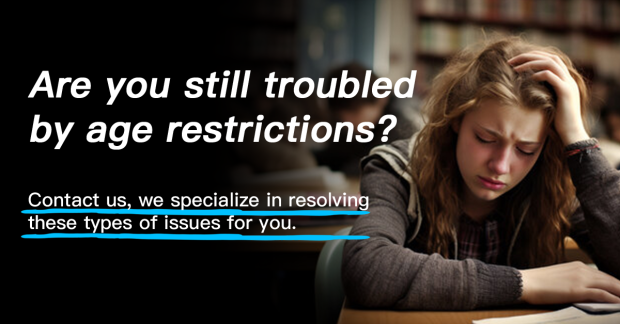What is Real ID and Its Role in Modern Identification
Real ID is a federal security standard for state-issued driver’s licenses and identification cards, established by the 2005 Real ID Act. Designed to enhance identity verification, it requires states to adopt stricter document requirements and security features. These include embedded holograms, tamper-resistant materials, and machine-readable zones, making it harder to forge or alter. By 2025, Real ID will be mandatory for accessing federal facilities and domestic air travel, but its impact extends beyond government use—private sectors like the rental furniture industry now leverage it to strengthen tenant screening.
To obtain a Real ID, applicants must provide multiple proofs: a birth certificate, Social Security card, and two documents showing current residency. This multi-layered validation ensures the ID holder’s identity is authenticated against official records, creating a reliable foundation for verification in business contexts.
Why Tenant Screening Matters in Furniture Rental
The rental furniture industry operates on a unique model where businesses retain ownership of movable assets—sofas, beds, electronics—that are temporarily used by tenants. Unlike traditional property leases, where the asset (a home) is fixed, rented furniture is portable and vulnerable to misuse. Risks include non-payment, damage, or even theft, where items might be sold on secondary markets. Effective tenant screening mitigates these risks by ensuring renters are trustworthy and financially stable.

Without robust screening, businesses face increased costs from repairs, lost inventory, and legal fees to recover unpaid dues. Identity verification is a cornerstone here; confirming a tenant’s true identity prevents cases where individuals use fake IDs to hide poor financial histories or criminal records, protecting both the company’s assets and revenue streams.
How Real ID Strengthens Tenant Verification
Real ID’s strict issuance process directly addresses common challenges in tenant screening. Here’s how it enhances verification:
- Fraud Prevention: The multi-document requirement for Real ID makes it nearly impossible to use forged or stolen identities. This reduces instances where applicants create fake personas to secure rentals without intent to pay.
- Data Consistency: Real ID data (name, DOB, address) aligns with official records, allowing businesses to cross-reference with credit bureaus, background check services, and rental history databases. This consistency ensures screening reports are accurate and reliable.
- Legal Clarity: In disputes over unpaid rent or damaged furniture, a verified Real ID provides concrete evidence of the tenant’s identity, simplifying legal action or collection efforts.
Integrating Real ID into Your Screening Workflow
Adopting Real ID into tenant screening requires practical steps to ensure efficiency and compliance:
- Staff Training: Train employees to recognize Real ID features, such as the gold star at the card’s top, holographic images, and microprinting. States often provide free guides or webinars for this purpose.
- Digital Tools: Invest in ID scanning software that reads the machine-readable zone (MRZ) on Real IDs. These tools auto-extract data (name, address) to populate screening forms, reducing errors and saving time.
- Hybrid Screening: Pair Real ID verification with other checks. Use credit reports to assess financial responsibility, contact previous landlords for rental history, and request income proof (pay stubs) to confirm affordability.
- Privacy Compliance: Store Real ID data securely using encrypted systems. Limit access to authorized staff only and follow laws like the Fair Credit Reporting Act (FCRA) when sharing or disposing of sensitive information.
Common Challenges in Real ID-Driven Screening and Fixes
Even with Real ID, rental furniture businesses face hurdles. Below are five common issues and actionable solutions:
1. Tenants Present Non-Real ID Forms of Identification
Problem: Some applicants may use non-compliant state IDs, especially if their state delayed Real ID rollout. Others might rely on passports or military IDs.
Solution: Accept federally approved alternatives. The TSA lists valid IDs, including U.S. passports, green cards, and military IDs. Use scanning tools to verify these documents’ authenticity, cross-checking data with government databases where possible.
2. Difficulty Spotting Counterfeit Real IDs
Problem: Fraudsters may replicate Real ID security features, making manual checks unreliable.
Solution: Use AI-powered verification tools. Services like IDnow or Trulioo analyze ID features (holograms, barcodes) and compare them to government templates, flagging fakes in seconds. This reduces human error and speeds up the process.
3. Lengthy Screening Processes Deter Tenants
Problem: Overly thorough screening can frustrate applicants, leading them to choose competitors with faster processes.
Solution: Streamline with digital onboarding. Let tenants upload ID photos and documents via a secure app before in-person visits. Automated tools pre-verify IDs and cross-check data, reducing in-person wait times and improving the applicant experience.
4. Data Breach Risks with Stored ID Information
Problem: Storing Real ID data increases the risk of cyberattacks or unauthorized access.
Solution: Implement strict data protection measures. Encrypt stored data, use two-factor authentication for access, and conduct regular security audits. Inform tenants about your data practices in clear language to build trust.
5. Valid Real ID but Weak Credit History
Problem: New renters or immigrants may have valid Real IDs but lack credit scores, making reliability hard to assess.
Solution: Use alternative metrics. Request employment letters or pay stubs to confirm steady income, contact previous landlords (even from abroad) for rental references, or ask for a co-signer with strong credit. Some screening services now include “alternative credit” reports based on utility or phone bill payments.

